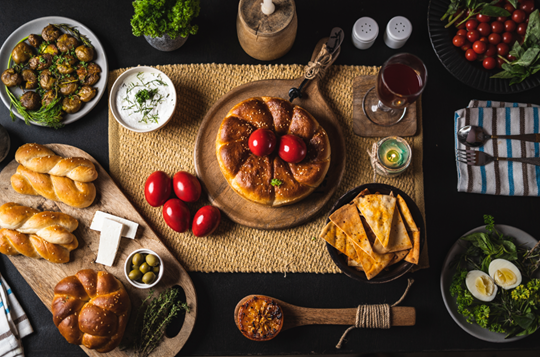last updated: 12 March 2024
3 minute read time

With an early Easter just around the corner this year, it’s definitely time to start thinking about what you’ll be serving your Easter feast. It’s important to keep in mind that it could be quite warm so keep your ideas flexible and remember, the best food and wine pairing is the one you enjoy the most – regardless of any ‘rules’!
Canapés and Seafood
I’ve bundled these together because quite often they work in similar ways when it comes to wine pairing. Canapés are traditionally served with a sparkling wine – the wine’s high acidity in particular will cut through the richness of your bite-size morsels, from oysters to smoked salmon to charcuterie. Choose a dry sparkling wine, ensure it’s well-chilled and you’re good to go.
The sparkling wine will also work well if you’re serving seafood at any point during the meal. The flavour profile of non-vintage sparklings is typically light enough to not overwhelm a delicate piece of fish and again, the acidity works incredibly well against the richness of a prawn cocktail sauce.
More robust fish, perhaps cured salmon or tuna, will work well with a high acid white wine such as Riesling or Sauvignon Blanc and, if you have die-hard red wine drinkers to please, opt for a lighter red, such as Beaujolais or a fresh, young Pinot Noir. If it’s a warm day, don’t be afraid to pop these wines in the fridge for half an hour before serving.
Meats
Many people serve lamb at Easter in which case a very safe pairing is a Cabernet Sauvignon – it has great acidity to cut through the lamb fat, it has plenty of bold flavours to stand up to however you’ve cooked the lamb (the char from the BBQ, the rosemary, the garlic and so on) and the fruitiness of the wine will be a great contrast to the savoury flavours on your plate.
If you’re going with a ham for your centrepiece, consider Shiraz as a great option. One from a cooler climate will have more peppery notes to it which will work well with the smokiness of the meat. For white wine lovers, a Riesling is a great choice here.
Dessert
Typically the trickiest part of the meal to pair with wine, because the sweetness of the food will swamp all but the sweetest of wines. If you’re serving a lighter, less sweet, dessert, such as fruit salad or a colomba, then a sweet sparkling wine, such as a Moscato, is a brilliant choice. As the flavours and sweetness ramp up (pavlova, anyone?), you need to up your sweet wine – start looking to botrytised wines, such as Sauternes, or even fortified wines, such as Port (which is a great choice if your dessert features chocolate).
These are just guidelines … if you want to drink sparkling wine the entire way through your meal, I most certainly will not argue with you!

